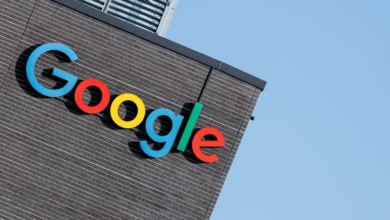Nvidia’s $46.7B Q2 Triumph: Next Challenge Is Inference ASICs

▼ Summary
– Nvidia reported $46.7 billion in Q2 revenue, with data center revenue up 56% year over year to $41.1 billion, and issued Q3 guidance of $54 billion.
– Custom ASICs from competitors like Broadcom, Google, Meta, and Microsoft are gaining traction, challenging Nvidia’s market position with performance, cost, and ecosystem advantages.
– Nvidia’s CEO emphasized the difficulty of building AI infrastructure and defended their integrated platform strategy, which includes networking and compute systems beyond just GPUs.
– China’s market represents a significant growth opportunity but faces uncertainty due to export controls, with revenue from the region dropping to low single digits of data center sales.
– Nvidia’s growth is decelerating as competition intensifies, though the company continues to innovate with new architectures like Blackwell and Rubin while navigating supply chain and efficiency challenges.
Nvidia’s remarkable $46.7 billion in Q2 revenue, driven by a 56% year-over-year surge in data center sales, underscores its dominant position in the AI infrastructure market. Yet beneath these impressive figures lies a shifting competitive landscape where custom ASICs are gaining traction, presenting both challenges and opportunities for the industry leader.
During the recent earnings call, Bank of America’s Vivek Arya questioned CEO Jensen Huang about the potential for ASICs to erode Nvidia’s market share. Huang responded by emphasizing the difficulty of building functional AI infrastructure, noting that many custom chip projects never reach production. Still, competitors like Broadcom are making significant strides, with the company projecting 55% to 60% growth in AI-related revenue next year. Tech giants including Google, Meta, and Microsoft are also deploying custom silicon at scale, signaling a broader industry shift.
The competitive dynamics extend beyond raw performance. Companies are now differentiating themselves through use case specialization, cost efficiency, and ecosystem flexibility. Broadcom, for instance, is positioning its Jericho3-AI platform around Ethernet-based standards, reducing vendor lock-in and appealing to enterprises seeking interoperability.
Hyperscalers are increasingly investing in proprietary silicon to optimize performance and control costs. Google’s TPU v6, developed with Broadcom, Meta’s MTIA chips for ranking and recommendation engines, and Microsoft’s Project Maia for sustainable AI workloads all reflect this trend. Even ByteDance relies on custom silicon to power TikTok’s recommendation algorithms, handling billions of daily inference requests without GPUs.
Nvidia’s integrated platform remains a formidable advantage. Huang stressed that modern AI requires six distinct chip types working in concert, a complexity that creates high barriers to entry. The company no longer just sells GPUs; it delivers end-to-end AI infrastructure, supported by a deeply entrenched ecosystem. Frameworks like PyTorch and TensorFlow are optimized for CUDA, and major AI model releases from companies like Meta and Google target Nvidia hardware first.
The networking segment further validates this strategy, with revenue soaring 98% year-over-year to $7.3 billion. Technologies like NVLink enable unprecedented GPU interconnect speeds, and Huang revealed that Nvidia captures roughly 35% of a typical gigawatt-scale AI factory’s budget, a testament to its architectural influence.
Still, headwinds are emerging. Growth, while strong, has decelerated from triple-digit percentages to 56%, and geopolitical factors are adding uncertainty. CFO Colette Kress noted that sales in China now represent a low single-digit percentage of data center revenue, and Q3 guidance excludes H20 shipments entirely. Huang remains optimistic about China’s long-term potential, citing its concentration of AI researchers and vast market size, but export controls continue to cloud the outlook.
Looking ahead, Nvidia’s guidance of $54 billion for Q3 signals continued confidence. Innovations like the Blackwell architecture and developments in NVLink and Spectrum-X networking reinforce its technological edge. Yet the competitive intensity is rising. Broadcom, Amazon, Google, and others are moving beyond experimentation to large-scale deployment of custom silicon.
The AI race is accelerating, and while Nvidia’s platform strengths are significant, the economics of ASICs are compelling enough to fragment the market. Enterprise buyers, like astute investors, may increasingly diversify their bets, leveraging Nvidia’s established ecosystem while also exploring specialized ASIC solutions for inference, training, and other targeted workloads. The coming quarters will reveal whether Nvidia’s integrated approach can withstand the pressure from a new generation of agile, purpose-built competitors.
(Source: VentureBeat)

